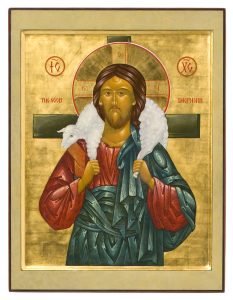 I would continue sharing thoughts about acquiring of the Mind of Christ. I have been sharing the thoughts of St. Anselm, whose thoughts Western Christianity has embraced. They are different from those thoughts of the Fathers of the Eastern Church.
I would continue sharing thoughts about acquiring of the Mind of Christ. I have been sharing the thoughts of St. Anselm, whose thoughts Western Christianity has embraced. They are different from those thoughts of the Fathers of the Eastern Church.
For the first thousand years of Christianity, the Gospel message was not understood from the new common scholastic mindset of Anselm. Today, Anselm’s ideas are unfortunately the most dominate perspective of Christianity in the Western world, both Protestant and Roman Catholic. The early Christians, understood that Christ releases us from sin by destroying its root, death. Those who have put on Christ are no longer slaves of sin, “because you are not under the Law but under grace” (Romans 6:14). For the “Law of the Spirit of Life in Christ Jesus has set you free from the Law of sin and death” (Romans 8:2).
Anselm, the Roman Catholic Archbishop of Canterbury in the 11th Century (1033-1109), was the father of modern Scholastic theology and philosophy. He has been seen by some to be the first to develop a doctrine of Atonement apart from the Church’s biblical-patristic heritage. By adjusting his theology to fit his society’s understanding of the time, Anselm utilizes a feudal ethic to rationally discern the unfathomable depth of the mystery of God.
Anselm can be seen as a bridge between St. Augustine of Hippo and Thomas Aquinas. By using classical philosophy and logic as instruments of discovery (instead of a means of interpretation), Anselm’s doctrines made the finite truth of God subject to a created finite intellect. In contrast, the Scriptures are quite clear that God’s revelation “is not after man. For it neither was I taught it, but by the revelation of Jesus Christ” (Galatians 1:11-12). [It must be pointed out that the Eastern Fathers did use Greek philosophy to help them formulate their interpretations of the mystery of Christ]. The current Roman Catholic position, originating from Anselm, officially states that “justification has been merited for us by the Passion of Christ, who offered Himself on the cross as a living victim… whose blood has become the instrument of atonement for the sins of all men.” The question then is raised: How does this Atonement happen and who is it offered to? The Eastern Church’s approach is a little different. More to come
